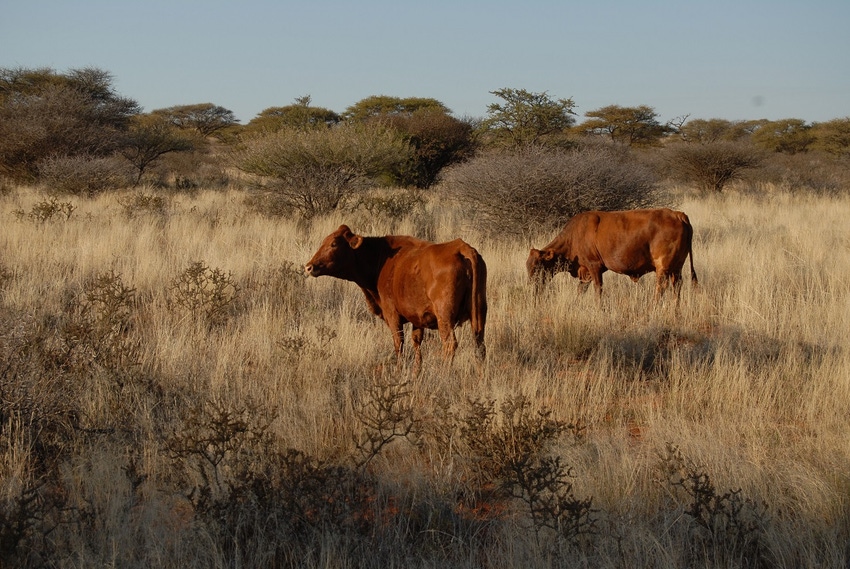
The troubles with poisons have mostly to do with quick death, slow death, painful death, chronic sickness and long-term weakness or wasting.
The oppositional truth is that a vast majority of poisons are also medicinal when ingested occasionally or even regularly in moderate or small amounts. All natural systems operate in boom and bust, but when it comes to cattle health and to the health of our neighbors, friends, family and ourselves, the bust needs to be managed away from stresses leading to sickness and death. There are a bunch of attributes concerning happiness, wellness, fun and money that should have a paramount appeal to all of us. Excellent health is a big deal and should be our everyday goal.
There may be "no gain without pain," but I promise that we should strive to prevent the pain and severely limit the drugs that will dull our sword. A large number (perhaps 25%) of Americans are now addicted to pain- and brain-suppressing pharmaceuticals and a huge number of persons are making a fortune marketing these habits and addictions. The President has declared another war on drugs. It will be interesting to see how he gets along with the fight.
Discipline has been defined as the training and action that develop and yield an instruction and exercise of self-control that leads to a betterment of the individual, the herd and the society. A high degree of teaching and order is a requirement. To achieve discipline, routine repetition is most often a necessity. This supports quality performance and physical health. However, the outlaws and the outlaw nature are ever-present.
Cattle that are dead broke to electricity and a hot wire and stay with the herd are safer from the "wolves" that are out there in the bushes. Once we learn how to obtain and consume the right foodstuffs and drink good health is almost guaranteed. Yes, we can fall off the wagon occasionally for extremely short periods, but when we know to do right and yet we routinely do wrong we are running in quicksand.
The critical issue to cattle and land management is closely associated with timing and management. Our health is also in close association. Everything is affected, connected and associated with everything. When we graze a pasture sward that is slightly immature or near perfect the animal performance is often really good, but the soil health often goes south. Micro-managing for the production of extreme grazing animal performance is a management failure when viewed over the longer term.
This is an important concept we need to get a really good grasp on. We live in a world of boom and bust. For example, the swings in weather are normal and to be expected. The same is true of our markets. Some areas have bigger swings than others, but everyone will experience good and bad, ups and downs.
East Montana's Ray Banister and I spend bunches of time talking about dry weather because that's where he lives. I also talk a lot about high moisture events and a lack of sunlight density because that's where I live. All of this stuff is important, but it is also normal and to be expected. We need to plan for such happenings. Remember that these events are often lengthy and have a history of taking a lot of good folks out of business. This should not be the case.
Recently, I read and studied a really good article about the critical nature of "time" in grazing management. The author did a good job making multiple points, but his emphasis was on animal performance and production, produced by stage II forage growth and grazing efficiency. If emphasis is always on these two factors there is another plan that is a forced requirement. That plan is destocking, and destocking yields a loss of profitability both short and long term.
Walt Davis agrees with Banister and me that a viable operation is marketing the excesses of forage growth and a thriving ecosystem in the form of livestock (commonly calves, yearlings, cows, sheep and so forth). We must structure the operation to do this every year, no matter what the market and weather gives us. We cannot afford the cost of fully destocking. The cost is too high.
Animal health and the above facts and their understanding has led us to soil and plant health and a lot of study. Plants require cattle, cattle require plants and soil requires both cattle and plants.
The control factor that we beef producers need to lock in on is the fact that we need to place emphasis on pasture and plant recovery and an ever-increasing plant diversity, plus nearly continual increases in soil health. Without this cushion, we are always vulnerable to the weather, the markets and high production costs.
Our management emphasis will always need to be aimed at complete plant recovery followed by short-term, high-density grazing. We don’t stand to break this natural model rule long term. It certainly stands to break us if we fail to heed these truths.
We could do well to ingrain this understanding and truth into our cerebrums and take them into our everyday planning and executions. Think boom and bust every day. It is the natural-model answer to land and cattle management and health.
About the Author(s)
You May Also Like






